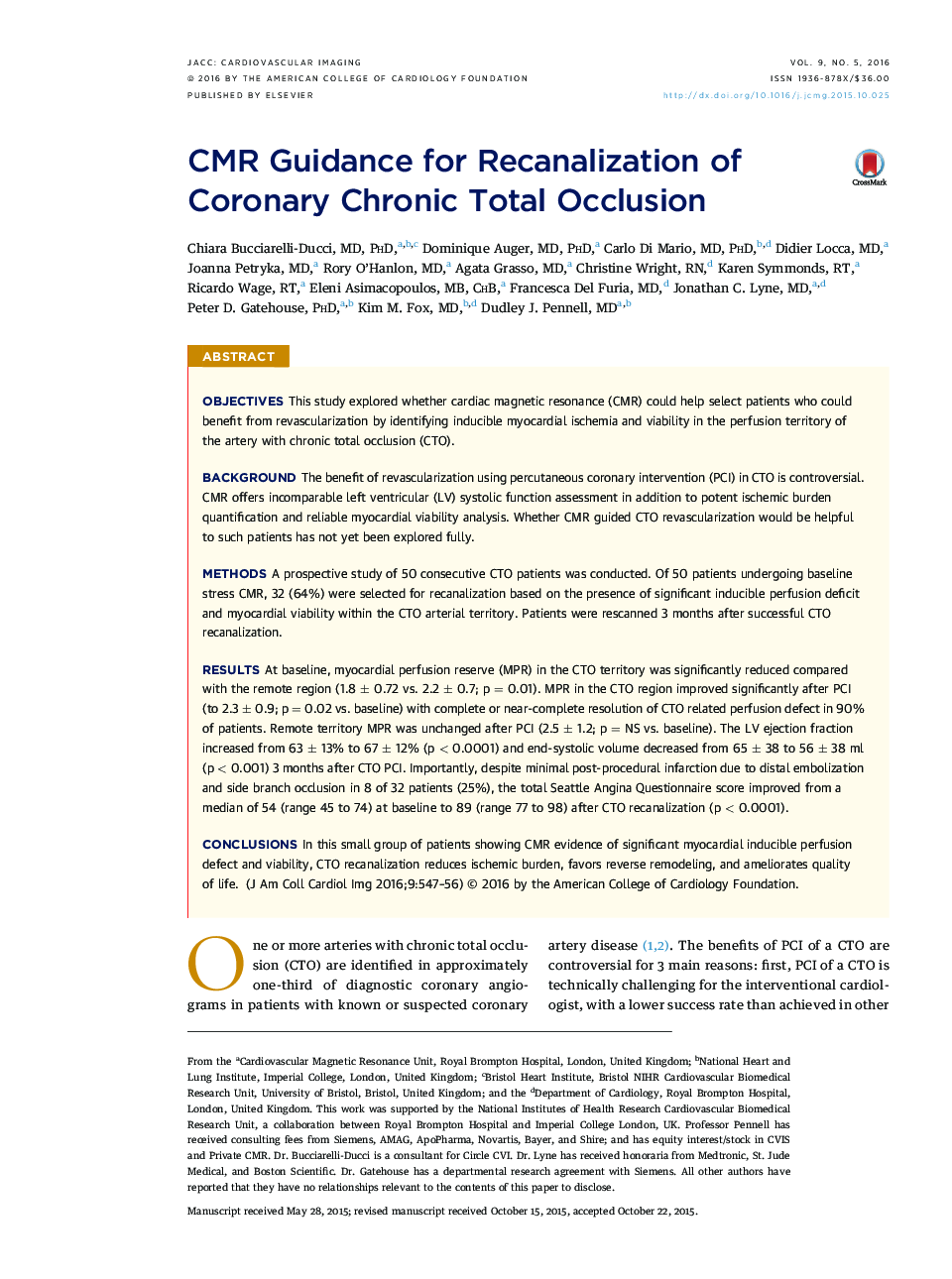| کد مقاله | کد نشریه | سال انتشار | مقاله انگلیسی | نسخه تمام متن |
|---|---|---|---|---|
| 2937729 | 1176898 | 2016 | 10 صفحه PDF | دانلود رایگان |

ObjectivesThis study explored whether cardiac magnetic resonance (CMR) could help select patients who could benefit from revascularization by identifying inducible myocardial ischemia and viability in the perfusion territory of the artery with chronic total occlusion (CTO).BackgroundThe benefit of revascularization using percutaneous coronary intervention (PCI) in CTO is controversial. CMR offers incomparable left ventricular (LV) systolic function assessment in addition to potent ischemic burden quantification and reliable myocardial viability analysis. Whether CMR guided CTO revascularization would be helpful to such patients has not yet been explored fully.MethodsA prospective study of 50 consecutive CTO patients was conducted. Of 50 patients undergoing baseline stress CMR, 32 (64%) were selected for recanalization based on the presence of significant inducible perfusion deficit and myocardial viability within the CTO arterial territory. Patients were rescanned 3 months after successful CTO recanalization.ResultsAt baseline, myocardial perfusion reserve (MPR) in the CTO territory was significantly reduced compared with the remote region (1.8 ± 0.72 vs. 2.2 ± 0.7; p = 0.01). MPR in the CTO region improved significantly after PCI (to 2.3 ± 0.9; p = 0.02 vs. baseline) with complete or near-complete resolution of CTO related perfusion defect in 90% of patients. Remote territory MPR was unchanged after PCI (2.5 ± 1.2; p = NS vs. baseline). The LV ejection fraction increased from 63 ± 13% to 67 ± 12% (p < 0.0001) and end-systolic volume decreased from 65 ± 38 to 56 ± 38 ml (p < 0.001) 3 months after CTO PCI. Importantly, despite minimal post-procedural infarction due to distal embolization and side branch occlusion in 8 of 32 patients (25%), the total Seattle Angina Questionnaire score improved from a median of 54 (range 45 to 74) at baseline to 89 (range 77 to 98) after CTO recanalization (p < 0.0001).ConclusionsIn this small group of patients showing CMR evidence of significant myocardial inducible perfusion defect and viability, CTO recanalization reduces ischemic burden, favors reverse remodeling, and ameliorates quality of life.
Journal: JACC: Cardiovascular Imaging - Volume 9, Issue 5, May 2016, Pages 547–556